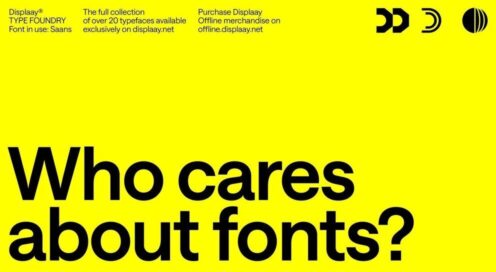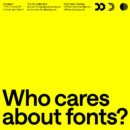Elevating Design Voices: Patrick White RGD
Written by Patrick White RGD, Avison Young
As RGD celebrates the work and experiences of our Black and Brown Members, we hear from Patrick White RGD, Senior Graphic Designer, McKinsey Global Institute.
Patrick is a seventh generation Canadian, descended from the free and formerly enslaved people of Africa who fled oppression in the United States. They found refuge and freedom in the Chatham and Windsor areas of Southern Ontario before the US Civil War. He is a senior graphic designer at the McKinsey Global Institute, the business and research arm of global consulting firm, McKinsey & Company. His role covers the design and layout for traditional print, infographics, presentations and social media.
What are the ways in which you experience racism in the design industry?
Most of my life, I have been the only Black person or one of a few, from pre-school through to high school, throughout post-secondary education to employment. I grew up in a predominately white neighbourhood where the opportunities outweighed the challenges. I attended a high school that most of my peers graduated from and went on to attend university; that was the expectation. I was fortunate to have an older brother who did a BFA at Guelph and parents who supported and enabled whatever I chose for a career. I did not know much about graphic arts, but I heard that it was a way to make money by something I was very good at, drawing. I chose to attend Humber College’s Advertising and Graphic Design class in 1984. And again, I was the only Black student. It did not seem to be a career option for BIPOC but, thankfully, nobody told me that.
One incident comes to mind, from years ago, while doing label production at a freelance job. A tradesperson, who I had never met before, walked into the room with his associate and said to me, “I bet you hope you don’t get any of this on you.” He was referring to the white paint he was using to paint the walls. He said it boldly, without fear of reprisal. The other designer and I looked at him and at each other in shock and we did nothing. Sadly, it is often that individuals of a team or in a social group remain silent as they witness a discriminatory act, perhaps out of ignorance or fear–a result of that systemic legacy.
I have been in-house with the same company for many years, the only Black employee on the team and have always been supported by those I work with. I have been occasionally dismissed or ignored by individuals, but it is difficult to say if that behaviour was motivated by role expectations, race or a combination of both.

This industry has been historically difficult for anyone who isn't white to get their foot in the door. Who and/or what helped you navigate it?
I have been very blessed. I did not take the typical agency/studio route that many others have. After college, I started at a small ad agency in North York where the lead designer was also Black and well-respected. After that, I tried, unsuccessfully, to freelance. However, I found running that business to be challenging (I am not the best entrepreneur). I left the industry and worked in an administrative role for the provincial government for seven years. Upon learning of the province’s plans to relocate its ministries outside of Toronto–mine was going to Peterborough–I was able to receive re-training funds for a CDROM creation and production course at Digital Media Studios in Toronto. My project was on the US Negro Baseball Leagues. I had self-trained with design software on a Mac SE earlier, but the formal classes on Adobe and Macromedia products greatly improved my skills. I had a number of interviews at new media companies and my picture was on my resume, so I did get in the door. Eventually, a classmate’s husband who worked for my current company saw what I could do. He brought me in to assist client teams with their visual communications. Over the years, my manager, who was not a designer, was my champion. In order to keep up with current trends in design and technology, she encouraged skills and educational upgrades and sent me to annual conferences like DesignThinkers, HOW Design Live and Adobe MAX. I made connections with design counterparts in other McKinsey offices around the world and collaborated on internal company projects. Most of what I worked on was highly confidential, so I have a non-existent portfolio and I was even unable to discuss my work with my family. My kids have recently said they thought I was some kind of secret agent because they never knew what I did for a living. Four years ago, I transferred to the role that I am now in and we publish public documents so they are able to see what I do.
Our popular Canadian design history is rooted in European modernism, but there’s so much more out there. Who and/or what influences you?
When you think about art and design, you might think that people would be more open to diversity. I appreciate talent and skill no matter what package it comes in. As a community, we are deprived when different voices are silenced. Yet we all have our own biases as individuals and as communities. History has shown, from recorded time and across the world, that those with power have benefitted by oppressing and subduing other communities for their benefit and progress. Western societies were built so European nations would prosper. That, in itself is not a bad thing. Every nation should prosper. Unfortunately, that prosperity often came at the expense and on the backs of other people groups, i.e., the dehumanizing and enslavement of African and Indigenous people in the Americas. The idea that the white skin of the ruling class was better than the rest is one of the roots underpinning our colonial history that subtly influences the biases of today. So, it is no surprise that European modernism has been most influential in the design and art communities as well.
Since there was no internet–yes, I’m that old–I relied on trade magazines like Applied Arts, Communication Arts and How for inspiration. At the time, it did not bother me that the majority of articles and work examples fit into that slim narrative because that was all I had known. Canadians like Burton Kramer, Stuart Ash, Heather Cooper and Taylor & Browning were successful and I wanted to be as well. I had not learned about any Black contributions to Canada in my public school education — it was like we never existed. So why would the industry that I had chosen to work in be any different, especially if those leaders had been raised in the same educational systems? Thankfully, there are now more diverse voices in the discussion and we have access to them through modern media. Forest Young is the Global Principal at Wolff Olinns, the agency who recently redesigned our brand. Eddie Opara is a partner at Pentagram. Ralph Gilles (Canadian from Montreal) is Head of Design at Fiat Chrysler. I am also a fan of classical painting and Henry Ossawa Tanner is a hero. Kadir Nelson, Sanford Greene and Brian Stelfreeze, are illustrators and comic artists. There is room for many more and, sadly, I do not know of many Black or Indigenous women in those senior roles — yet.

What advice would you give to a recent grad?
We are in an amazing profession! We use our imagination to visually communicate ideas for someone else and we get paid for it. You are just as gifted and talented as anyone else, but you have to do the work. Keep learning, keep growing, show up on time, be flexible, share generously, disagree respectfully and bring your best self to work. We live in times in which your voice is finally being heard and the world is open to hear what you have to say.
Yet, life is not always easy and often unfair and sometimes you may face injustice because of your ethnicity, colour, gender, geographic origin, role in a company or sometimes someone is just having a bad day. Recognize it for what it is and respond to it as you would have someone respond to you if the roles were reversed. Don’t allow someone’s ignorance and ill treatment to distract you from your goals. Tell others how you want to be treated. Be kind to all. We, Canadians, are known to be nice but that is a passive term inferring we smile, do not offend and avoid conflict that makes us uncomfortable. Kindness is an active choice to see the shared humanity in others and treat them accordingly. The choice to be kind will promote you in more than just your career.
Where do we go from here?
People in the majority are awakening to the injustices and inequalities of their marginalized neighbours and many are open to changing “business as usual”. Change is hard but good leaders can take people places they would not otherwise be able to go. Design education should incorporate the good, the bad and the ugly–contributions by other voices including instructors, the history of denying those voices and the way that design and advertising negatively impacted non-European communities through political propaganda and stereotypical imagery, i.e., Aunt Jemima, Darkie toothpaste, Washington Redskins, Gucci and Prada’s blackface blunders, etc.
It has not been normal to have diverse leadership representation in Canadian organizations because diversity was acknowledged but not actively pursued. How can we champion our celebrated multiculturalism when monoculturalism is still the reality? Design leaders can make room for BIPOC in their firms and mentor them to leadership roles. Anti-racist policies should be normalized and enforced with zero tolerance similar to sexual harassment policies. Everyone needs to put energy into consciously making change in their circles of influence so that diversity is normal and people from every shade of human skin colour are equally valued and have the opportunity to be in the room where decisions are made.
Certified and Provisional Members interested in sharing their experience in the industry with our community are invited to write to Rushika at pr@rgd.ca
Patrick White RGD
Avison Young
I am a Senior Graphic Designer with extensive experience in the professional services sector. As a creative leader, I enjoy collaborating with others to provide engaging and impactful solutions that help my clients communicate their messages effectively. Skilled in print and digital design, including visual design, brand building, marketing communications, presentation design, and page layout, across multiple platforms.
Tag
Related Articles


Michael J. Young RGD














